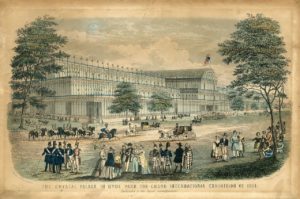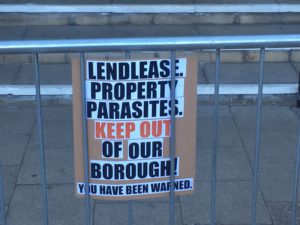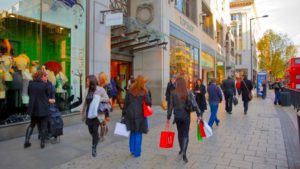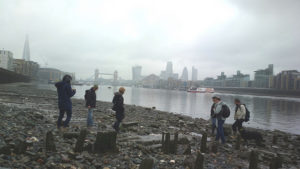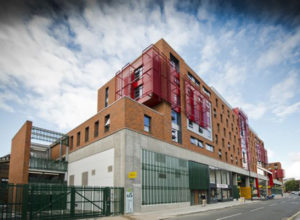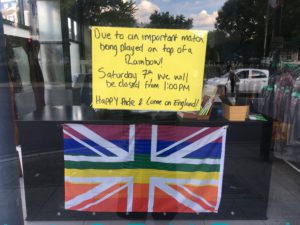On the astroturf surface of the Mayfair roof cafe, customers in deckchairs watch Wimbledon on a big screen and the Labour politician who represents residents of the most expensive square on the Monopoly board explains how he made history by winning a council seat there on 3 May.
“I think people wanted to see change and felt the council wasn’t on their side,” says Pancho Lewis, the 30 year-old communications consultant who is the first Labour councillor ever to represent West End ward on Westminster City Council. “They felt it was instead on the side of very, very privileged people who have interests in property development here.”
It seems indisputable that Lewis’s win and Labour’s performance in West End as a whole reflected a growing disquiet over the speed and nature of change in the physical and cultural environment in a part of Central London where local character and quality of life undoubtedly feel to many to be under siege.
Lewis finished second in a contest that proved ferociously tight in a ward that, on paper, barely qualified as marginal. Labour’s West End team worked hard on lending empathetic ears to the concerns of those who live in Mayfair, its rackety neighbour Soho and, to the north of Oxford Street, the Westminster part of Fitzrovia. He received 984 votes, just six fewer than poll-topping Conservative Tim Barnes and just 11 more than the winner of the third seat, Tory incumbent Jonathan Glanz.

His two fellow Labour candidates finished a close fourth (947 votes) and fifth (927) and the third Tory runner a trailing sixth (868), probably self-harmed by a remark on Twitter that will have looked decidedly homophobic to many even if, as she insisted, it wasn’t meant that way. Before all that, the Conservative candidate selection process for West End had looked unhappy to put it mildly.
Another factor in Labour’s unprecedentedly good showing, Lewis says, was that its West End team activated a dormant local Labour vote whose existence is easy to overlook. The elevated location for our meeting, the Brown Hart Gardens terrace on top of the former Duke Street electricity substation, recently refurbished by Grosvenor, is surrounded by resolutely red brick Peabody mansion blocks, such as Stalbridge Flats on Lumley Street. “We were knocking on doors in this area and finding there hadn’t been any significant political activity from Labour for years.”
And then there was the trouble over Oxford Street. Westminster Labour old hands had whispered hopes that single candidates from the campaign against its pedestrianisation might erode Tory support in the three wards they fought, which included West End. There, the campaign’s Ronald Whelan took a significant 291 votes, which might have helped the Labour cause, with Lewis and colleagues coming out firmly against the pedestrianisation programme that had been worked out by the council, the big retailers, the Mayor’s deputy for transport, Transport for London and others over the two years since Sadiq Khan became Mayor.

What prompted these Labour activists to oppose a major policy initiative by a Labour Mayor that had looked like succeeding where attempts by previous Mayors to bring about the transformation of the capital’s most famous – and famously smogged and clogged – retail avenue had failed? Was their stance driven by principle or a mere ploy to get on the right side of a nimby-ish electorate?
Lewis, a former parliamentary researcher and social enterprise leader with a particular interest in fostering public engagement, insists his position was motivated by listening hard to those he wished to represent. Though critical of the council for pulling the plug on the plan without even informing TfL or Mayor Khan, he says, that with a scheme of such a size, “at the end of the day you need to provide reassurance to people who live in the area that it’s not going to ruin their lives. Ultimately, both the council and TfL failed to do that.”
Khan and TfL see things differently. The Mayor’s annoyance was expressed first by a vow not to “walk away from Oxford Street” after Westminster’s “betrayal” and then in a terse letter to the council referring to its published intention to spend £400,000 of local implementation plan (LIP) funding from TfL on developing an alternative “place based” approach and warning that “no TfL funding of any sort is to be used without prior discussion and agreement.” Khan was not amused that over £8m of TfL’s money had already gone into the original scheme.
At TfL, the response has been a mixture of hopes – as yet unfulfilled – of what one senior figure calls an “outbreak of sanity” and bafflement that a joint project which, in TfL’s eyes, had involved remarkably few trade-offs between the different interested parties and, it insists, would have resulted in no dispersal of traffic down residential streets while delivering benefits including much better air quality, was so abruptly publicly rejected – albeit a bafflement diluted by a weary recognition that a relatively new Tory leadership was getting jumpy about losing seats.
Lewis, though, sticks by what he was hearing on the streets and doorsteps. “If you spend weeks on end talking to people, asking them what they are worried about and this is the number one thing they keep coming up with, you start to listen. And if there are legitimate concerns, any reasonable person would say, actually this isn’t right.” Along with local critics of the pedestrianisation plans, he contends that neither the council nor TfL “displayed any convincing evidence that there wasn’t going to be displacement of traffic. TfL said their modelling showed there wouldn’t be, but they were never very transparent about where that modelling came from”.
The council’s cabinet is due to consider its own proposals and its next steps will be followed closely. Oxford Street is Westminster’s street, not TfL’s, but undertaking major local public realm changes of any kind inevitably entails co-operation with the Mayor’s transport agency, which stood ready to put tens of millions into the rejected pedestrianisation and is, by the way, in charge of Westminster’s traffic lights too. Some sort of reconciliation looks essential if any form of significant revision of current traffic arrangements is to take place any time soon. And specific provision for the opening of the Elizabeth Line in December will not wait.
Pancho Lewis will be one of the keenest watchers of what happens next and doing so in the wider context of the West End’s evolution. Worries that Soho and other parts of the area are losing their distinctiveness and pockets of calm through standardisation and over-development are not new, but the recent escalation of development pressures – and, for some, opportunities – has added to their intensity.
Lewis is alive to this and the apparent willingness among very affluent Mayfair people to change their voting habits as way of expressing their dislike of the grip those Lewis characterises as the neoliberal super rich seems to have taken on council policy. He describes the relationship former deputy leader Robert Davis had with major developers as “absolutely disgraceful” and opposes, for example, possible increased use of Grosvenor Square for commercial events: “At the moment, it’s a lovely square – really quiet and it feels like a safe haven from all the noise nearby, as if you’re stepping back in time.” He’s unhappy at what he calls “new hotels springing up left, right and centre”. Plans have recently been approved for one to replace the Film House building on Wardour Street, home to a warren of post-production and other creative enterprises that have maintained the long standing local film industry link.
It isn’t hard to sympathise. It is harder, though, to define what might practically be done to prevent such eviscerations with the local planning powers available – to bring about a better balance between continuity and change in such a crucible of ultra-prime real estate. Lewis recognises that there is “no silver bullet solution” to the issue, but insists that the Conservatives “can and should be doing a lot of things differently”. His voice will be important in the coming years if that is to come about.


